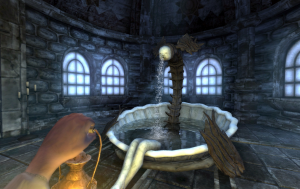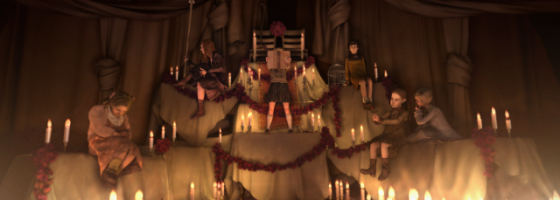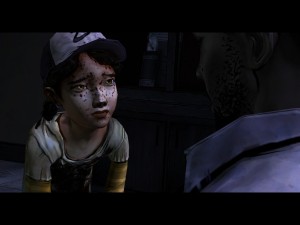My recent post on antagonistic horror design got me thinking about a game that I hate to love: Rule of Rose. The game had great music and a very deep and disturbing story.
The game came out for the Playstation 2 and was hit with a slew of poor reviews. The reason? While the game told a very great story, it was also one of the worse horror games released and serves as today’s lesson on game design.
School of Hard Knocks:
The story of Rule of Rose which I’ll try to keep as spoiler free as possible is about a women named Jennifer. Who arrived at a rundown orphanage and became captive by the children there who call themselves the Red Crayon Aristocrats. To survive she had to play their games while trying to figure out what was going on.
What made Rule of Rose so disturbing were all the themes that ran through the game: bulling, peer pressure, rape, abortion and child murder were some of the topics the game brought up. The style of the game came in the form of how everything was meant to mimic childhood: from how each chapter of the game was in the form of an in game storybook, to the inventory screen looking like a chalkboard.
The game also featured an interesting take on an ending, with giving the player free reign to explore the orphanage to get more concrete information about what really happened. Building a very disturbing yet fleshed out world and situation.
However, for all the great storytelling that went into Rule of Rose, as mentioned the game failed commercially for one main reason: The gameplay was terrible.

While Amnesia’s gameplay wasn’t as complex as Rule of Rose, it was better polished and as a result, more engaging.
Rule of Rose came out during the heyday of the survival horror genre, meaning all the usual tropes were in full effect: bad camera angles, tank like controls and awkward combat.
The developers took the concept of playing as a weak character to the extreme: Jennifer could barely run, took forever to turn and never even extended her arm to swing her weapons.
In the early chapters combat didn’t happen too often, but later chapters really showed off the problems with the combat system. Many enemies could keep her stuck in one spot with constant attacks preventing the player from making any actions.
Exploration– which was one of the cornerstones of the genre was to put it bluntly, simple. Most of the environments looked exactly the same and the puzzles of the game were literal fetch quests. Jennifer’s companion: a dog could be used to sniff out information, either in the form of finding a key/important item, or where said item would go.
“It’s better to have a few game systems that are fully polished and integrated, as opposed to a giant poorly designed mess.”
This meant that the majority of the game was the player following the dog around and knowing where each trap was going to happen.
Outside of the horror sections, the player had to wander around the orphanage and find the right hotspots to trigger the next part of the story. This, the player had to repeat for every chapter of the game.
Simply put, Rule of Rose‘s story wrote a check that the gameplay couldn’t cash: relying on poor gameplay indicative of the genre instead of trying to make something engaging. Rule of Rose was a classic example of a simple truth about video games: A great story can make a good game better, but it can’t redeem bad game design.
This is one of the points that I remember whenever I play games that were considered “art games” — where the focus was primarily on the storytelling and the graphics and not the gameplay.
Now what’s interesting was that Rule of Rose came out in 2006, a few years before the revival of adventure games and of having games focus on storytelling above gameplay. The important element about why these later games worked as opposed to Rule of Rose was not about the complexity of the gameplay, but of the quality.
Playing a Story:
Over the last few years with the rise of indie studios, we’ve seen many games come out with a focus on story over gameplay — From Amnesia, To The Moon, The Walking Dead and many more. What made these titles work was that even though the storytelling was the forefront of the experience, the gameplay was built to work in tandem with the story.
No one complained in Amnesia that you couldn’t run around shooting all the monsters as the game was about hiding and sneaking around. Nor did anyone want Telltale to add corridor shooting segments to The Walking Dead.
What we’ve learned was that: sometimes less is more. It’s better to have a few game systems that are fully polished and integrated, as opposed to a giant poorly designed mess.
Amazing games like The Binding of Isaac and FTL didn’t feature a lot of different mechanics, but the systems in place were polished and well designed.
A part of me wonders if Rule of Rose came out today with gamers having a greater acceptance of storytelling, if the game would do any better. Further still, if the designers wouldn’t feel the need to have combat for the sake of combat. For most people who played Rule of Rose, they became so frustrated by the gameplay that they didn’t care anymore about the story or felt scared by the game.
Rule of Rose remains as a lesson that no matter how great a story you have, at the end of the day a game is meant to be played.



